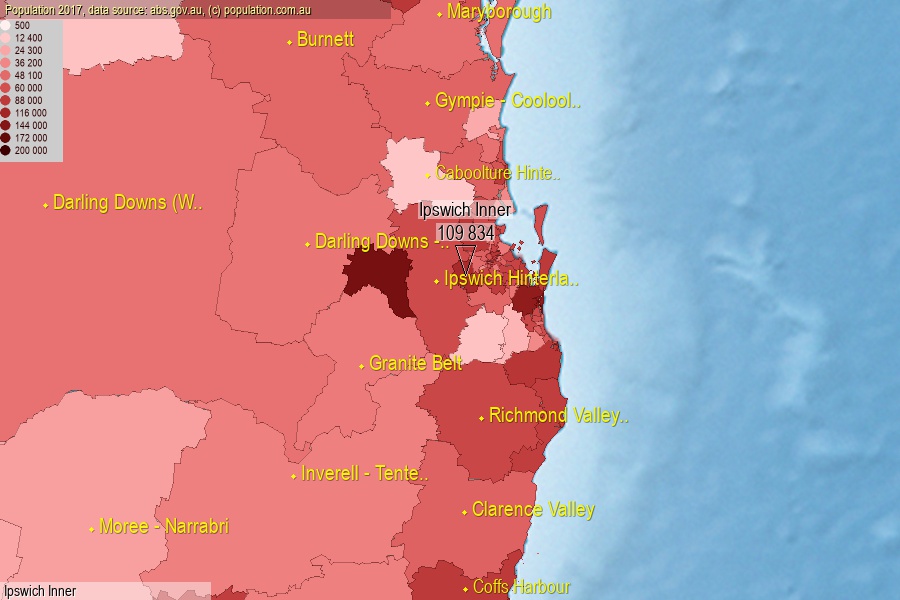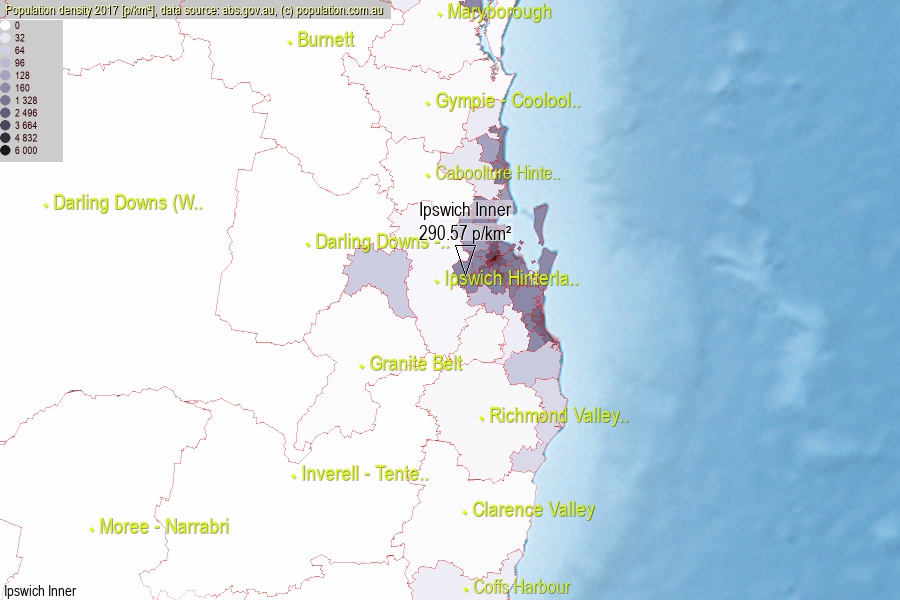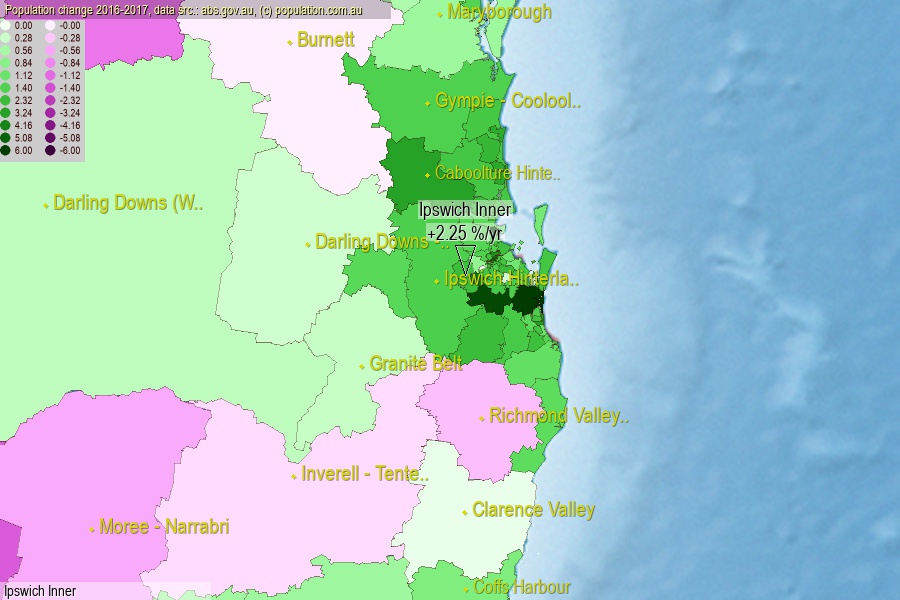 population.com.au
population.com.auLast official estimated population of Ipswich Inner (as Statistical Area Level 3) was 109 834 people (on 2017-06-30)[2]. This was 0.44% of total Australian population and 2.201% of QLD population. Area of Ipswich Inner is 378.00 km², in this year population density was 290.57 p/km² . If population growth rate would be same as in period 2016-2017 (+2.25%/yr), Ipswich Inner population in 2025 would be 131 234. [0]



Click to enlarge. Ipswich Inner is located in the center of the images.
Population [people], population density [p./km²] and population change [%/year] [2]
View borders » (new window) [4]
[1991-1992] +0.81 %/Y
[1992-1993] +1.18 %/Y
[1993-1994] +0.91 %/Y
[1994-1995] +0.56 %/Y
[1995-1996] +0.59 %/Y
[1996-1997] +0.37 %/Y
[1997-1998] -0.02 %/Y
[1998-1999] -0.38 %/Y
[1999-2000] +0.29 %/Y
[2000-2001] +0.54 %/Y
[2001-2002] +1.40 %/Y
[2002-2003] +1.54 %/Y
[2003-2004] +1.69 %/Y
[2004-2005] +1.90 %/Y
[2005-2006] +1.92 %/Y
[2006-2007] +1.93 %/Y
[2007-2008] +2.54 %/Y
[2008-2009] +3.01 %/Y
[2009-2010] +2.00 %/Y
[2010-2011] +1.65 %/Y
[2011-2012] +2.38 %/Y
[2012-2013] +2.02 %/Y
[2013-2014] +1.49 %/Y
[2014-2015] +1.70 %/Y
[2015-2016] +1.76 %/Y
[2016-2017] +2.25 %/Y
[0] Calculated with linear interpolation from officially estimated population
[1] Read more about SA3 and Australian Statistical Geography Standard (ASGS) on abs.gov.au
[2] Population data from Australian Bureau of Statistics (Population and density: 2017; change: 2016-2017)
[3] Digital Boundaries: Australian Statistical Geography Standard (ASGS) 2016.
[4] Border coordinates are simplifyed using Ramer-Douglas-Peucker algorithm.